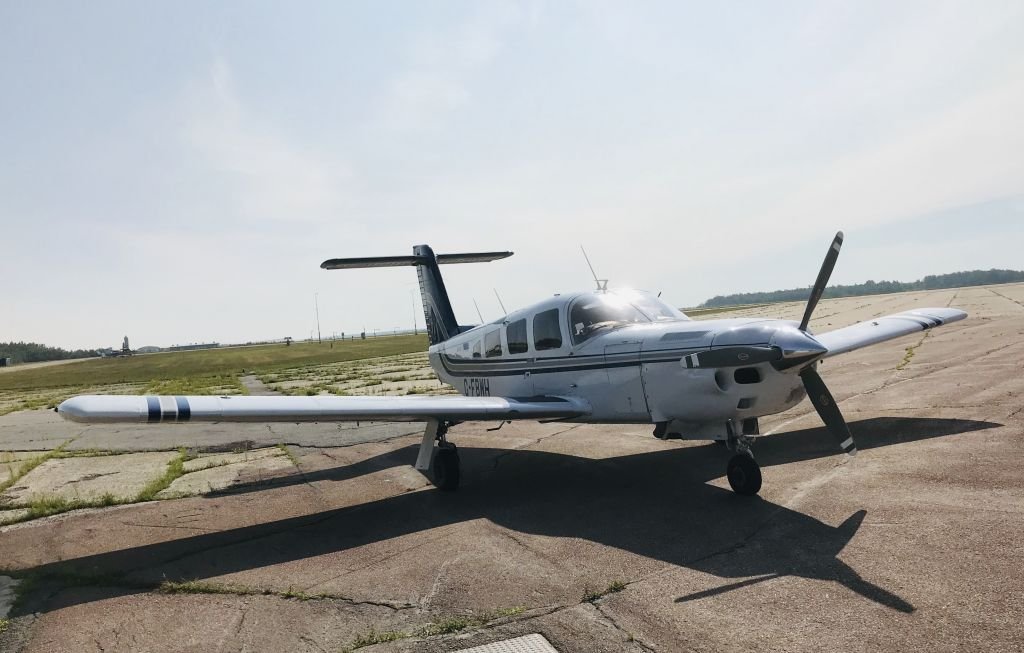When news broke of the small plane crash in West Nashville, the community was shaken. The tragic incident involving the Piper PA-32 aircraft, registered as CFBWH, not only resulted in the loss of five lives but also highlighted critical aspects of aviation safety. This blog post aims to provide an in-depth analysis of the CFBWH crash, exploring community reactions, potential causes, and the broader implications for airline safety.
Introduction to the CFBWH Crash
On a somber evening, the small plane registered as CFBWH met a tragic end in West Nashville. The Piper PA-32 was on a flight from Kentucky to John C. Tune Airport (JWN) when it encountered severe difficulties. Tragically, all five souls on board—two adults and three children—did not survive. This incident has left the aviation community pondering the factors that led to this heartbreaking event.
The Flight Path of CFBWH
Departure and Initial Flight
The CFBWH took off from Kentucky with a planned destination of John C. Tune Airport. Flight Aware data shows that the plane had already completed two legs of its journey, starting from Canada earlier in the day. The aircraft’s pilot, faced with deteriorating conditions, attempted to land at JWN but was ultimately unsuccessful.
Struggles Over Bells Bend
Eyewitness accounts and Flight Aware data indicate that the pilot struggled significantly over Bells Bend. The area, known for its large flat agricultural fields, could have provided a safer landing option had it been daylight. However, night conditions rendered these fields invisible, leaving the pilot with limited options. The pilot’s last sighting was Interstate 40, a well-traveled route that posed its own risks.
Final Moments
The final moments of the CFBWH flight were marked by desperation. The plane passed over the runway at JWN but did not land. Instead, it made a U-turn and crashed into a grassy area, narrowly missing Interstate 40. The ATC audio captures the pilot’s distress as he tried to manage the failing aircraft, making it clear that he knew he was losing altitude too quickly.
Community Reactions
Heartbreak and Condolences
The aviation community and local residents have expressed profound sadness over the loss of the CFBWH passengers. “It’s heartbreaking,” said forum user sevenfeet, who lives on the side of Nashville where the crash occurred. “The ATC audio is gut-wrenching. The pilot knew he was in trouble.”
Questions and Speculations
The incident has also sparked numerous questions and speculations. Why did the pilot overfly JWN without landing? Was there a sudden engine failure? User andrewtwentytwo speculates, “Given the plane was on its third leg of the day, fatigue and fuel starvation could have played a role.”
Calls for Improved Safety Measures
There have been calls for improved safety measures in light of the CFBWH tragedy. User HotelSoap suggested, “General aviation needs a kind of Safety Management System (SMS) type scorecard for flights, even if it’s just advisory.”
Analyzing the Causes of the CFBWH Tragedy
Possible Engine Failure
One of the primary speculations revolves around engine failure. The Lycoming engines used in Piper PA-32s are generally reliable, but they can fail without warning. Flight data suggests that the engine may have quit suddenly, possibly due to fuel starvation. This theory is supported by the fact that the plane had been flying for over five hours, close to the limit for most general aviation aircraft.
Fuel Management Issues
Fuel management is another critical factor. The Piper PA-32 requires pilots to switch fuel tanks every hour. If the pilot forgot to switch tanks during the flight, it could have led to fuel starvation. User andrewtwentytwo noted, “Fatigue could have been a factor, given that it was their third leg of the day.” Proper fuel management, especially under fatigue, is crucial to avoid issues like CFBWH tragedy.
Environmental Challenges
Environmental factors also played a significant role. The crash occurred after dark, making visual navigation challenging. The area around JWN is known for its tall towers and mountainous terrain, adding to the complexity of the emergency landing attempt. “Big towers and a mountain near Tune make it a dark hole at night,” pointed out user FlyingElvii.
Lessons Learned
Importance of Night Training
One of the key takeaways from the CFBWH tragedy is the importance of night training for pilots. Navigating and landing in low-light conditions require specific skills and experience. Aviation authorities should emphasize night training in their certification programs to better prepare pilots for such scenarios.
Enhanced Fuel Management Protocols
Another lesson is the need for enhanced fuel management protocols. Pilots should be rigorously trained in fuel management techniques, including the importance of switching fuel tanks regularly. This could prevent similar incidents in the future.
Improved Communication with ATC
Effective communication with Air Traffic Control (ATC) can be a lifesaver in emergency situations. The CFBWH pilot did communicate with ATC, but there may have been delays or misunderstandings. Pilots should be encouraged to declare emergencies sooner and provide clear information about their situation.
The Role of Technology in Aviation Safety
Advanced Warning Systems
Modern aircraft are equipped with advanced warning systems that can alert pilots to potential issues before they become critical. These systems include engine monitoring, fuel management alerts, and obstacle detection. Ensuring that all aircraft are equipped with these technologies can significantly enhance aviation safety.
Real-Time Data Analysis
Real-time data analysis can also play a crucial role. Platforms like Flight Aware provide valuable data that can help identify trends and potential issues. By analyzing this data, aviation authorities can develop more effective safety protocols and training programs.
AI and Machine Learning
Artificial Intelligence (AI) and Machine Learning (ML) are emerging technologies that can revolutionize aviation safety. These technologies can analyze vast amounts of data to predict potential issues and provide real-time recommendations to pilots. Implementing AI and ML in aviation can reduce human error and improve overall safety.
The Human Element
Pilot Fatigue
Pilot fatigue is a significant factor in many aviation incidents. Long flights and multiple legs in one day can lead to physical and mental exhaustion. It is crucial for aviation authorities to implement strict regulations regarding flight hours and mandatory rest periods to mitigate the risks associated with pilot fatigue.
Decision-Making Under Stress
Emergency situations require quick and effective decision-making. Pilots must be trained to handle stress and make sound decisions under pressure. Simulation training and stress management programs can help pilots develop these essential skills.
Crew Resource Management
Crew Resource Management (CRM) is a set of training procedures designed to improve teamwork and communication among crew members. Implementing CRM in general aviation can enhance coordination and decision-making, especially in emergency situations.
Community Support and Healing
Grieving Together
The loss of the CFBWH passengers has brought the community together in grief. Local residents, aviation enthusiasts, and fellow pilots have shared their condolences and support for the families affected by this tragedy. “We are heartbroken for the families,” said user Aer13. “Our thoughts and prayers are with them during this difficult time.”
Building a Support Network
Building a support network for those affected by aviation incidents is essential. This network can provide emotional support, practical assistance, and resources for navigating the aftermath of a tragedy. Community organizations, aviation groups, and mental health professionals can play a vital role in building and maintaining this support network.
Promoting Aviation Safety Awareness
Promoting aviation safety awareness can help prevent future tragedies. By educating the public about the importance of safety measures and best practices, we can foster a culture of safety in the aviation community. Events, seminars, and online resources can be effective tools for spreading this awareness.
Continuous Improvement in Aviation Safety
Ongoing advancements in technology, training, and safety protocols are essential to continually improve aviation safety. The CFBWH tragedy serves as a stark reminder of the importance of these advancements. By learning from past incidents and implementing new safety measures, the aviation industry can aim to prevent future tragedies.
Conclusion
The CFBWH tragedy in West Nashville has left a lasting impact on the aviation community, a community fueled by the passion and dedication of countless individuals. The loss of five lives is a heartbreaking reminder of the inherent risks in flying, highlighting the critical importance of aviation safety. This incident underscores the need for continuous vigilance and improvement in safety practices.
By understanding the factors that led to this tragic event and implementing the lessons learned, we can work towards a safer future in aviation. It is crucial for both aviation enthusiasts and professionals to prioritize safety, invest in advanced aviation technologies, and support one another in times of need. Cooperation and shared knowledge are the foundation of the aviation community, and these principles are key to preventing future incidents.
We can honor the memory of those lost in the CFBWH crash by making the skies safer for everyone. This commitment to aviation safety goes beyond regulations and procedures; it involves cultivating a culture that values every life and strives for excellence.
For those interested in aviation safety and best practices, consider joining our community of aviation experts. Engage with peers who are committed to safety and excellence, and stay informed about the latest developments in aviation safety. Sign up for our newsletter to receive updates, insights, and expert analyses. Join the conversation on our forum to share your insights and experiences, and learn from the collective wisdom of the aviation community.
In an industry where every detail matters, your participation and dedication can make a significant difference. Together, we can ensure that aviation remains a marvel of human achievement and a testament to our commitment to safety and mutual support.





